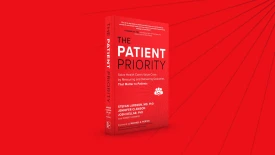MAY 4, 2023
There’s no rest for the weary goes the proverb, and nowhere is this truer than in health care. The pandemic tested the sector’s grit and stamina, and providers and others responded admirably. But resting on one’s laurels is not an option. There’s a long list of big challenges to be managed, including inflation, rising premiums, provider profitability, care inequity, and, perhaps most urgent, a labor shortage that threatens the ability to deliver top-quality care. There’s also the fact that health care, like other sectors, is going to have to do more with less, which means rethinking and recasting long-standing processes and practices in many critical areas.
Some of the issues to be managed are current, such as fast-rising costs and access to labor and resources. Others are structural and long-term, such as challenges to profitability and the changing nature, make-up, and demands of the workforce. In this year’s compendium of relevant BCG thinking, we’ve compiled a selection of articles on the big issues facing health care in the near to medium term. These issues include the following:
Resilience

Resource Constraints

Doing More with Less



Technology


Workforce Pressures


New Care Channels


Growing Inequity

Youth Mental Health

Value-Based Health Care
Previous Compendium Editions
For Further Contact







